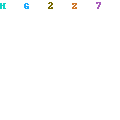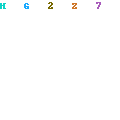Load and display the file gotoex.c for an example of a file with some "goto" statements in
it.
main()
{
int dog,cat,pig;
goto real_start;
some_where:
printf("This is another line of the mess.\n");
goto stop_it;
/* the following section is the only section with a useable goto */
real_start:
for(dog = 1;dog < 6;dog++) {
for(cat = 1;cat < 6;cat++) {
for(pig = 1;pig < 4;pig++) {
printf("Dog = %d Cat = %d Pig = %d\n",dog,cat,pig);
if ((dog + cat + pig) > 8 ) goto enough;
};
};
};
enough: printf("Those are enough animals for now.\n");
/* this is the end of the section with a useable goto statement */
printf("\nThis is the first line out of the spaghetti code.\n");
goto there;
where:
printf("This is the third line of the spaghetti code.\n");
goto some_where;
there:
printf("this is the second line of the spaghetti code.\n");
goto where;
stop_it:
printf("This is the last line of the mess.\n");
}
To use a "goto" statement, you simply use the reserved word "goto", followed by the symbolic name to which you wish to jump. The name is then placed anywhere in the program followed by a colon. You are not allowed to jump into any loop, but you are allowed to jump out of a loop. Also, you are not allowed to jump out of any function into another. These attempts will be flagged by your compiler as an error if you attempt any of them. This particular program is really a mess but it is a good example of why software writers are
trying to eliminate the use of the "goto" statement as much as possible. The only place in this program where it is reasonable to use the "goto" is the one in line 17 where the program jumps out of the three nested loops in one jump. In this case it would be rather messy to set up a variable and jump successively out of all three loops but one "goto" statement gets you out of all three.
Some persons say the "goto" statement should never be used under any circumstances but this is rather narrow minded thinking. If there is a place where a "goto" will be best, feel free to use it. It should not be abused however, as it is in the rest of the program on your monitor. Entire books are written on "gotoless" programming, better known as Structured Programming.
These will be left to your study. One point of reference is the Visual Calculator described in Chapter 14 of this tutorial. This program is contained in four separately compiled programs and is a rather large complex program. If you spend some time studying the source code, you will find that there is not a single "goto" statement anywhere in it. Compile and run gotoex.c and study its output. It would be a good exercise to rewrite it and see how much more readable it is when the statements are listed in order.
it.
main()
{
int dog,cat,pig;
goto real_start;
some_where:
printf("This is another line of the mess.\n");
goto stop_it;
/* the following section is the only section with a useable goto */
real_start:
for(dog = 1;dog < 6;dog++) {
for(cat = 1;cat < 6;cat++) {
for(pig = 1;pig < 4;pig++) {
printf("Dog = %d Cat = %d Pig = %d\n",dog,cat,pig);
if ((dog + cat + pig) > 8 ) goto enough;
};
};
};
enough: printf("Those are enough animals for now.\n");
/* this is the end of the section with a useable goto statement */
printf("\nThis is the first line out of the spaghetti code.\n");
goto there;
where:
printf("This is the third line of the spaghetti code.\n");
goto some_where;
there:
printf("this is the second line of the spaghetti code.\n");
goto where;
stop_it:
printf("This is the last line of the mess.\n");
}
To use a "goto" statement, you simply use the reserved word "goto", followed by the symbolic name to which you wish to jump. The name is then placed anywhere in the program followed by a colon. You are not allowed to jump into any loop, but you are allowed to jump out of a loop. Also, you are not allowed to jump out of any function into another. These attempts will be flagged by your compiler as an error if you attempt any of them. This particular program is really a mess but it is a good example of why software writers are
trying to eliminate the use of the "goto" statement as much as possible. The only place in this program where it is reasonable to use the "goto" is the one in line 17 where the program jumps out of the three nested loops in one jump. In this case it would be rather messy to set up a variable and jump successively out of all three loops but one "goto" statement gets you out of all three.
Some persons say the "goto" statement should never be used under any circumstances but this is rather narrow minded thinking. If there is a place where a "goto" will be best, feel free to use it. It should not be abused however, as it is in the rest of the program on your monitor. Entire books are written on "gotoless" programming, better known as Structured Programming.
These will be left to your study. One point of reference is the Visual Calculator described in Chapter 14 of this tutorial. This program is contained in four separately compiled programs and is a rather large complex program. If you spend some time studying the source code, you will find that there is not a single "goto" statement anywhere in it. Compile and run gotoex.c and study its output. It would be a good exercise to rewrite it and see how much more readable it is when the statements are listed in order.

